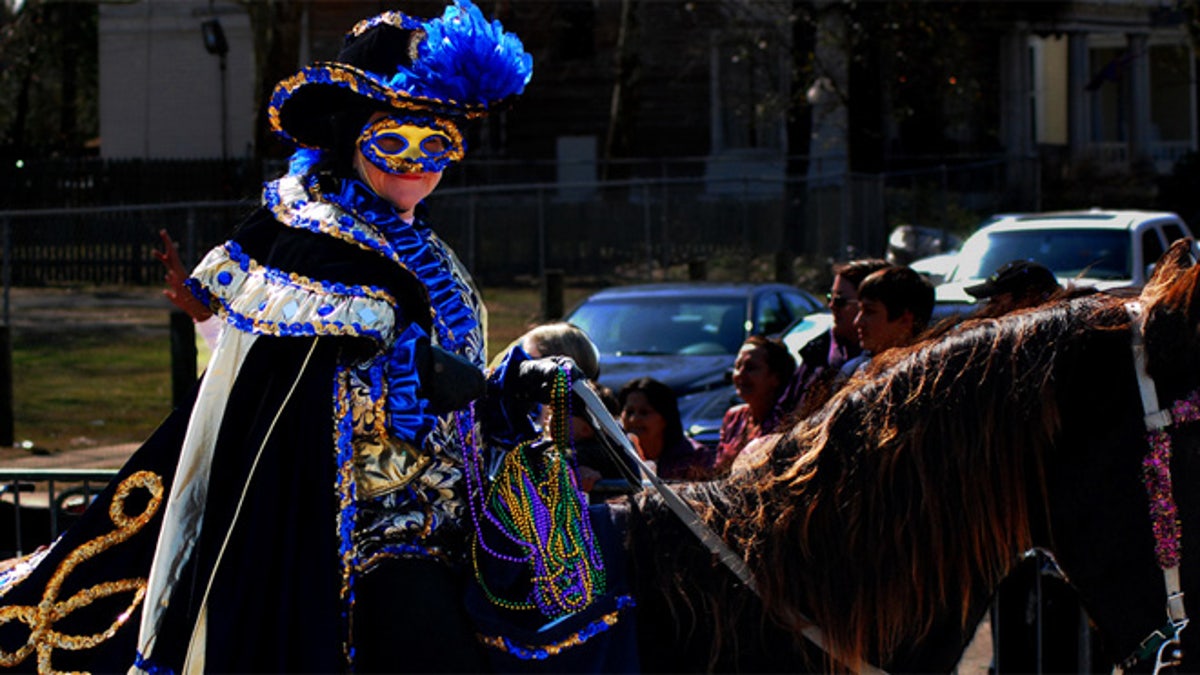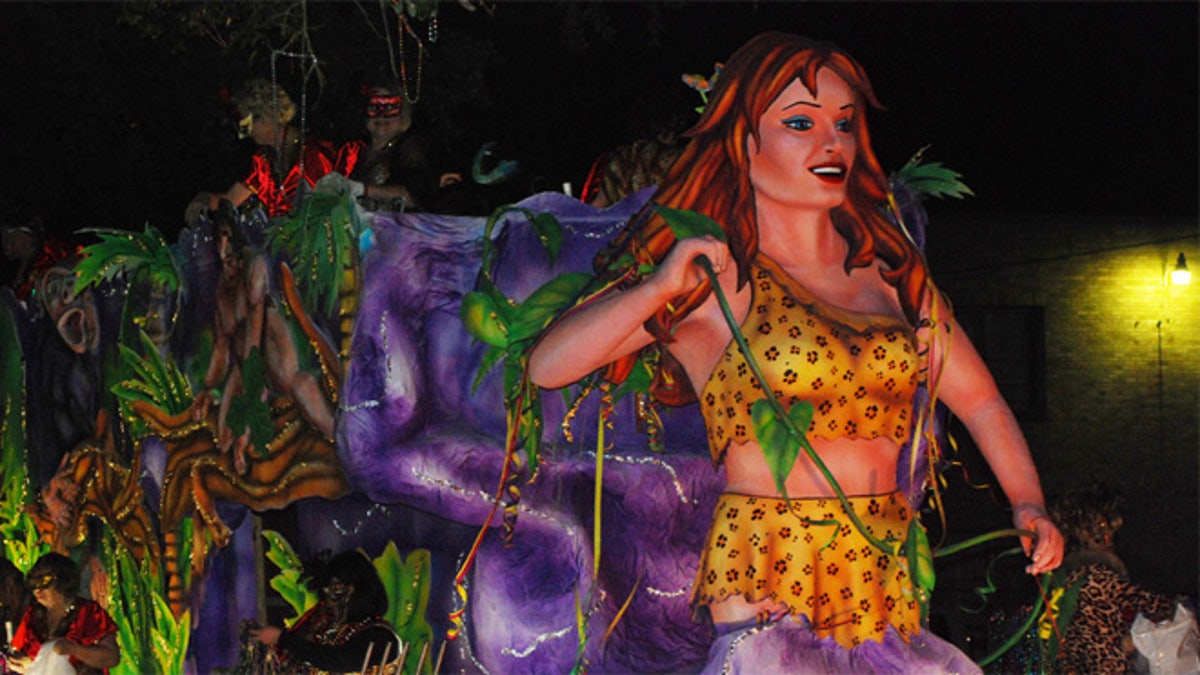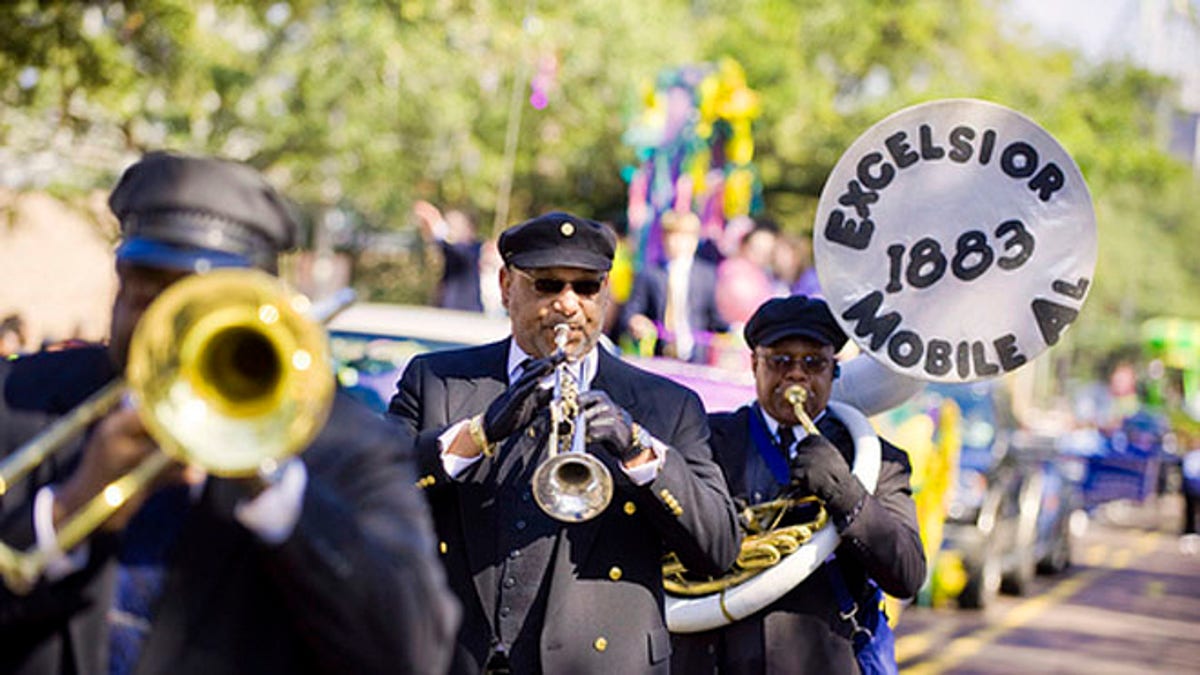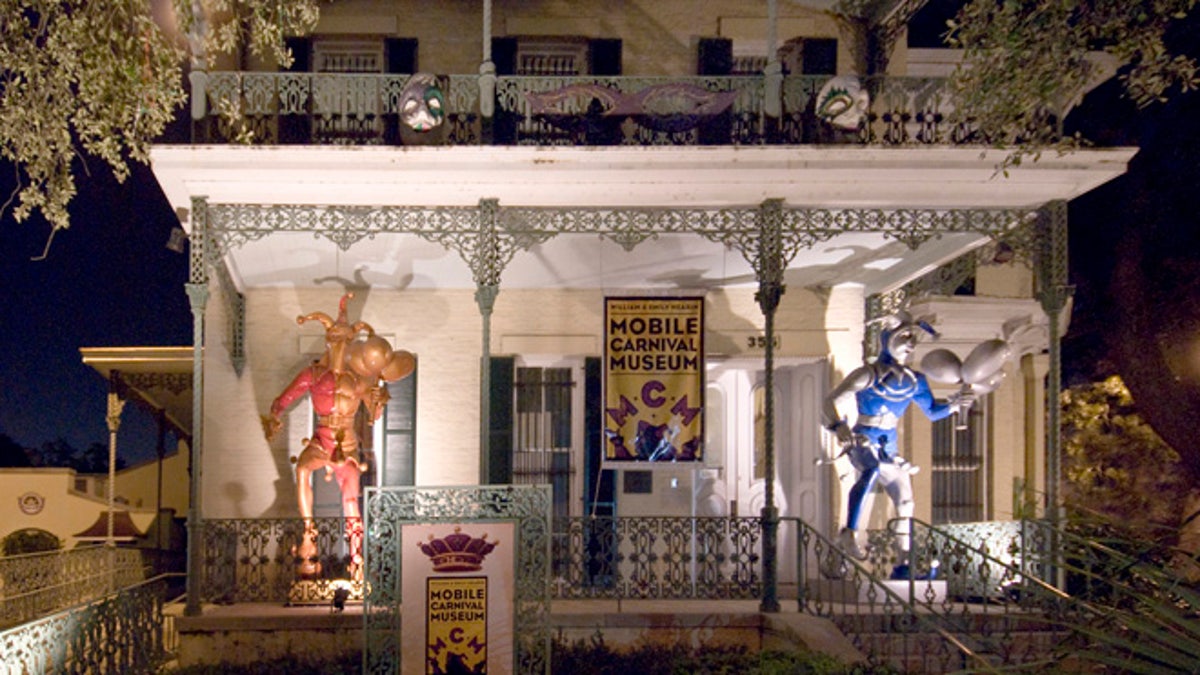
One of the 1.3 million people take part in Mobile's Carnival festivities. (Tony Hartley/ Flickr)
Before New Orleans, there was Mobile, Alabama — the birthplace of Mardi Gras in America.
Mobile, founded by Roman Catholics from France in 1702, was home to the first mystic society, or "krewe," which held America’s first Mardi Gras celebration in 1704 — 14 years before New Orleans was even founded.

(Tony Hartley/ Flickr)
More than four centuries later, those krewes are still responsible for the vast majority of parades and balls of Carnival.
Most Americans know Mardi Gras as a celebration of feasting, festivals and exuberant parades (and some errant behaviors associated with them), but it took more than a century for the parading to start. On New Year’s Eve in 1830, a group of friends raided a hardware store on their way home from dinner and used the tools they found as "instruments" as they paraded all the way to the mayor's house. (This being the South, they were ever-so-politely invited in for breakfast.) Their act of alcohol-fueled overindulgence became the first-ever procession of Carnival and set the bar for centuries of Carnival parading to come.

(Mobile Bay Visitors and Convention Bureau)
In New Orleans, Carnival is all about the Dionysian parades. But in Mobile, it’s a revered piece of local heritage and genteel society, and it's all about the lavish balls.
The city’s 39 parading societies hold their parades in the weeks leading up to Mardi Gras, but the greatest number are held on the weekend and Monday (Lundi Gras) before. Most of the parades are precursors to the pomp and pageantry of the mystic societies' ultra-formal white tie balls, which can have Broadway-caliber sets and performances (called "tableaux"), their own kings, queens and royal courts and up to 6,000 people in attendance.

(Tony Hartley/ Flickr)
The kings and queens wear opulent tuxedos and gowns, each with a custom-made train that can reach 21 feet long and weigh up to 75 pounds. The trains may include several yards of velvet, silk and antique fur; thousands of Swarovski crystals; precious stones; gold, silver, and platinum lame; leather and lace; rhinestones and glass beads. Each train costs hundreds of thousands of dollars and is custom-designed to reflect the personality of the newly crowned king or queen, including family crests and Greek society letters. Mobilians spend $33 million on Mardi Gras season, and visitors kick in $200 million more.
The Mobile Carnival Museum boasts an extensive collection of trains, formalwear, crowns and scepters from former kings and queens, as well as costumes from mystic societies and Carnival artifacts dating back to the 19th century. Docent-guided tours are a must-see for visitors, and they cost only $5 for adults. (Children 12 and under cost $2, and children under 3 are free.) Also worth visiting is the Mobile Museum of Art's special exhibition, "The Art and Design of Mardi Gras," on display through May 3.

(Mobile Bay Visitors and Convention Bureau)
There is a decided level of exclusivity to the mystic societies, and one must be a member or be invited by a member to attend most of the balls. But some are open to the public.
La Krewe de Bienville allows the public to ride on floats in its parade on Joe Cain Day (the Sunday before Mardi Gras) and to attend its "out-of-towners ball." Tickets can be purchased through the organization.
Other events open to the public include the coronation of the Mobile Carnival Association queen on the Saturday before Mardi Gras (free) as well as the MCA King's Supper that follows the coronation ($125) and the MCA Queen's Luncheon on Lundi Gras ($75). The public can also purchase tickets to the Mobile Area Mardi Gras Association's Grand Marshal's Ball on the Friday before Mardi Gras ($50), its Junior Monarch Royal Luncheon on Saturday ($40) and its Royal Coronation on Sunday evening ($10).
The Order of Doves, Mobile's first African-American mystic society, was formed in 1890 and reborn three years ago as the first truly inclusive mystic society in Mobile history. Anyone — black or white, male or female — can join, and membership is not shrouded in secrecy. This year its Order of Doves ball, held after a parade on Lundi Gras, will have a Great Gatsby theme and is open to the public. Tickets can be purchased here for $50.
While visitors are encouraged to buy tickets to these public events, any Mobilian will tell you that it's relatively easy to score an invitation to a private ball. With roughly 80 balls per Carnival season and anywhere from 1,000 to 6,000 attendees at each, there are bound to be some seats to fill.
The parades start 18 days before Mardi Gras and are family-friendly — in stark contrast to that other city. Float riders toss doubloons — aluminum coins embossed with the society's name, year of founding, and emblem on one side and the year of the parade on the other — as well as beads, candies, plastic trinkets and moon pies. Especially moon pies. Some 3.5 million moon pies will be tossed to the crowd during Carnival.
The oldest parading society in Mobile is the Order of Myths, founded in 1867, and theirs is the last parade of the season, held at 6 p.m. on Mardi Gras Day. The older societies use permanent floats every year in addition to new ones built for the current year's theme. The emblem float for the Order of Myths features the characters of Death and Folly, with Folly chasing Death around a broken pillar of life — a symbol of defiance that dates back to the Confederate Army’s defeat in the Civil War.
While every day of Carnival is a spectacle, none is greater than Joe Cain Day. Cain, who brought Mardi Gras celebrations back to Mobile after the Civil War, is honored on the Sunday before Mardi Gras every year with a graveyard procession featuring Cain's Merry Widows, who dress in 1800s funeral attire and theatrically weep and wail for their beloved husband. Once they've finished their mourning ritual, the Widows throw black beads and black roses to the crowd and head over to Cain's original home in the Oakleigh Historic District, where they are invited in for cocktails and bicker over who was his favorite. The Widows' procession and their visit to “Ol' Slac's” home are cause for a huge public street party.
In the afternoon, the Mistresses of Joe Cain — also clothed in 19th century mourning attire, but in lipstick red — lead the Joe Cain Procession, also known as the "People's Parade," featuring homemade floats made by groups of local friends, families, businesses, churches and schools. Lasting all afternoon, it is the longest parade of Carnival, and it draws 150,000 participants and onlookers.
Altogether, 1.3 million people take part in Mobile's Carnival festivities, making it the second-largest community festival in the country. If you're looking for family-friendly fun with a long and storied history steeped in local traditions, leave that other Mardi Gras to the drunk frat boys and head to Mobile!
If you want to find out more about the history of Mardi Gras in Mobile, check out Mardi Gras in Mobile— a new book by L. Craig Roberts, writer, historian, and docent extraordinaire at the Mobile Carnival Museum. Click here for more images from Tony Hartley.
